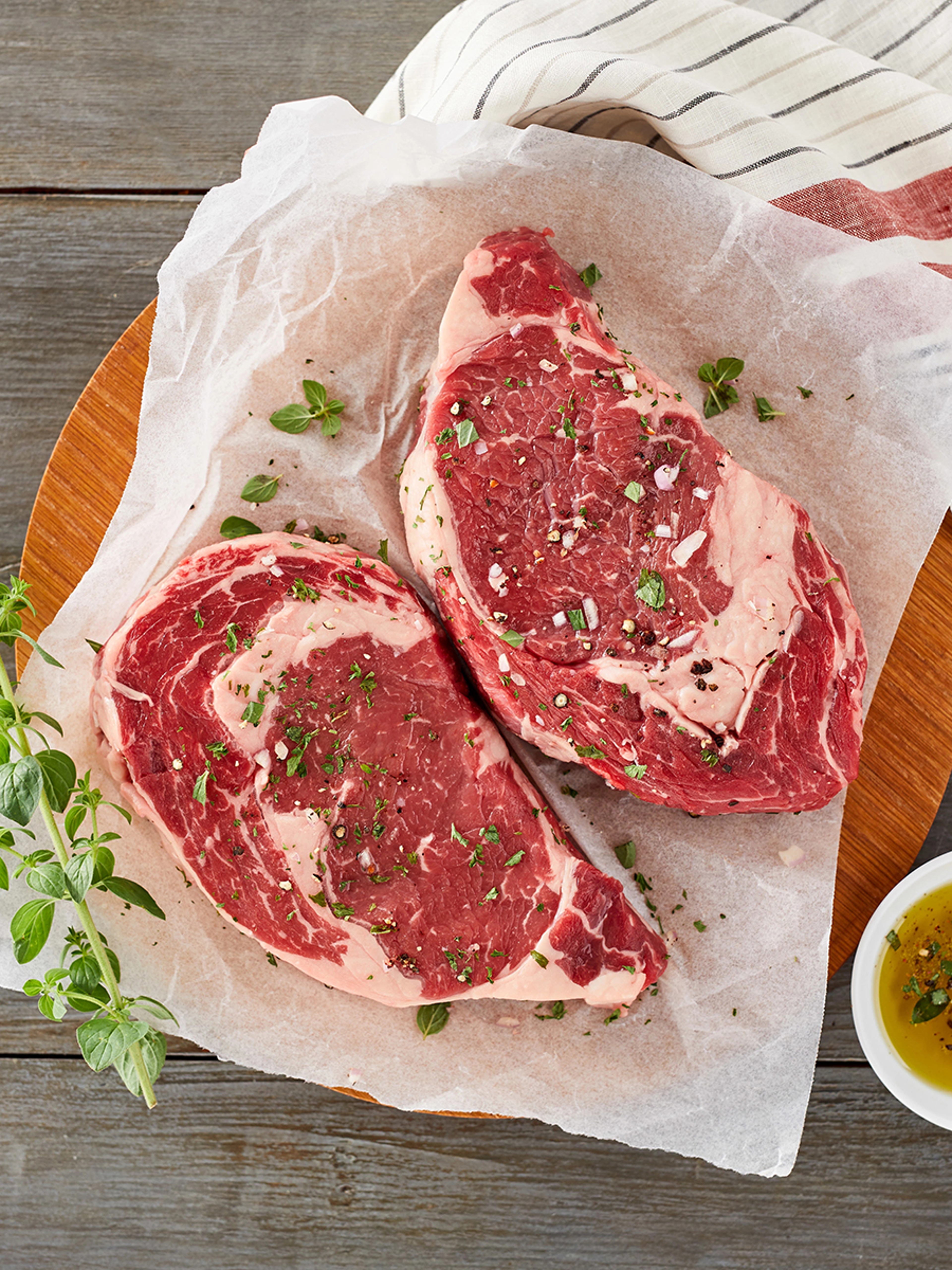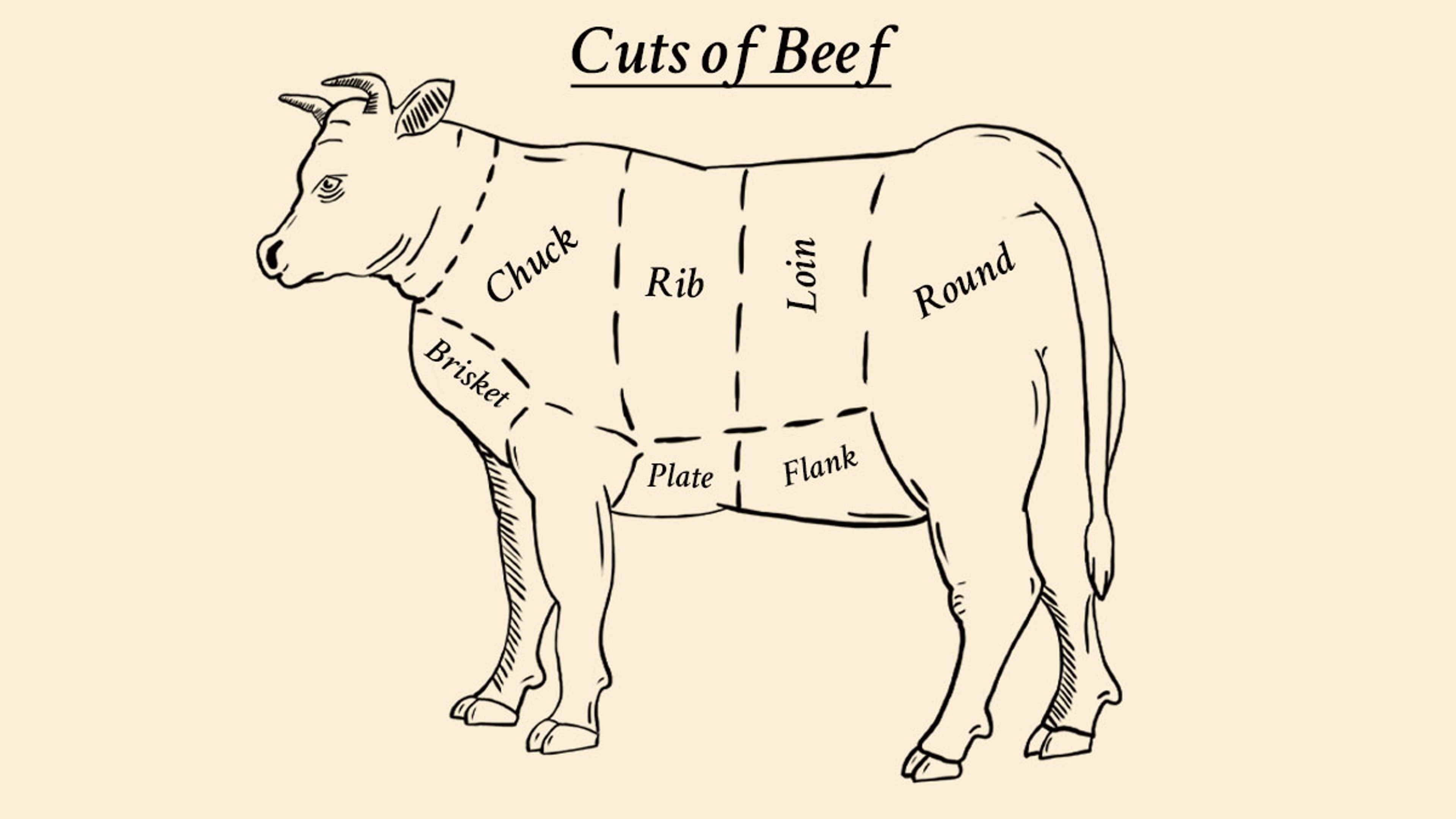What's Your Beef?
A glossary that determines which of your favorite cuts make the grade.
May 18, 2024
Navigating the realm of beefy jargon can be overwhelming, but fear not! We've curated a list packed with essential beef terms to guide you through the world of butchery, making shopping for beef and preparing it at home a breeze. From distinguishing between grass-fed and grass-finished to unraveling the intricacies of beef grades and beef cuts, this glossary is a must-read, whether you're a steak enthusiast or just want to beef up your vocabulary.
Glossary of beef terms
Dry-Aged vs. Wet-Aged: Dry-aged beef is aged in controlled, refrigerated conditions to enhance flavor and tenderness, resulting in a pricier option with a more concentrated taste. Wet-aged beef, in contrast, is vacuum-sealed, retaining volume without supplying the same depth of flavor as dry-aged beef.
Grain-Finished: This term refers to cattle that are fed grains, such as corn and soy, in the final stages before processing. This practice encourages weight gain and marbling, producing beef with higher fat content than grass-fed beef.

Grass-Fed vs. Grass-Finished: Grass-fed beef — full of healthy fats and vitamins — comes from cattle fed exclusively mother's milk and fresh grass throughout their lives. Grass-finished beef, resulting from cattle-fed grass before processing, has more marbling than grass-fed, is leaner than grain-finished, and offers diverse flavors based on geography and grass types.
Pasture-raised: These cattle are raised in open pastures with access to natural grazing. Unlike grass-fed cattle, however, they usually receive some grain supplementation.
Wagyu: This breed of Japanese cattle is known for perfect marbling and melt-in-your-mouth tenderness resulting from genetics and a special diet consisting of different grains, proteins, by-products, and roughage. With only 5,000 Wagyu cattle in the United States, the resulting Wagyu beef is highly sought after for its rarity.
Different beef grades
USDA Prime: This represents the highest-grade beef on the market. It is known for its superior marbling and exceptional tenderness, making it the highest-rated quality by the United States Department of Agriculture. Prime roasts and steaks are preferred for broiling, roasting, or grilling, and are commonly found in upscale restaurants, but the home cook can buy them from Harry & David.
USDA Choice: Commonly sold in grocery stores, this beef typically has less marbling than Prime but is still good quality. Choice roasts and steaks from the loin and rib are ideal for grilling, but less tender cuts from the round are better suited for braising or roasting.
USDA Select: This beef is characterized by uniform quality but is typically leaner than Prime or Choice. While suitable for grilling and a solid option for marinating or braising, Select beef may not match the juiciness and flavor of higher-grade options due to its lower marbling content.
USDA Standard and Commercial: This beef is consistently of average quality and typically leaner than higher grades. While reasonably tender, it may lack the juiciness and flavor of higher-grade options due to lower marbling.
USDA Utility, Cutter, and Canner: These beef grades are based on quality and tenderness, with Utility being the lowest. Typically not sold at retail, these grades are used for making ground beef and processed products like canned soup or frozen meals.

Most popular beef cuts
Filet Mignon: This is a lean cut in the middle of the back valued for tenderness. It's known as the most expensive cut of beef due to its delicate texture and mild flavor. Filets from Vital Choice are 100% grass-fed and originate from cattle that are never fed corn, grains, antibiotics, steroids, or growth hormones.
New York Strip: This balanced and tender steak cut comes from the short loin and is known for its distinct marbling. A popular choice for grilling, a New York strip steak brings the steakhouse experience to your home-cooked meals.
Porterhouse: This large steak from the rear of the short loin contains both tenderloin and New York strip, combining superior tenderness and flavor.
Prime Rib: This flavorful and well-marbled cut, known for its juicy and succulent qualities, comes from the primal rib section and is often roasted as a whole. Harry & David's Prime Rib, weighing in at nearly 4 pounds, comes from the finest cuts of the tender eye of the prime rib roast.
Ribeye: Direct from the rib section, this flavorful, well-marbled cut is superb when grilled, pan-seared, or broiled and is highly prized for its tenderness and exceptional taste. Vital Choice boneless ribeye steaks come from grass-fed cattle raised on family ranches, whereas Harry & David ribeye steaks are sourced from black angus cattle that are corn-finished for 120 days, thus creating the perfect marbling and tender, flavorful beef.
Sirloin: Cut from the sirloin area, this namesake cut offers a strong balance of beefy flavor and tenderness, and is commonly used for grilling. The cattle from which Vital Choice top sirloin comes are raised on family ranches, where they spend their entire lives roaming and grazing on nutrient-rich pasture.
.svg?q=70&width=384&auto=webp)







